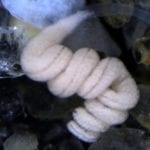 History
History  History
History  Weird Stuff
Weird Stuff 10 Funny Ways That Researchers Overthink Christmas
 Politics
Politics 10 Political Scandals That Sent Crowds Into the Streets
 Weird Stuff
Weird Stuff Ten Bizarre Facts About The Doge Meme
 Our World
Our World 10 Ways Your Christmas Tree Is More Lit Than You Think
 Movies and TV
Movies and TV The 10 Coolest Stars to Set Sail on The Love Boat
 History
History 10 Things You Didn’t Know About the American National Anthem
 Technology
Technology Top 10 Everyday Tech Buzzwords That Hide a Darker Past
 Humans
Humans 10 Everyday Human Behaviors That Are Actually Survival Instincts
 Animals
Animals 10 Animals That Humiliated and Harmed Historical Leaders
 History
History 10 Less Than Jolly Events That Occurred on December 25
 Weird Stuff
Weird Stuff 10 Funny Ways That Researchers Overthink Christmas
 Politics
Politics 10 Political Scandals That Sent Crowds Into the Streets
Who's Behind Listverse?

Jamie Frater
Head Editor
Jamie founded Listverse due to an insatiable desire to share fascinating, obscure, and bizarre facts. He has been a guest speaker on numerous national radio and television stations and is a five time published author.
More About Us Weird Stuff
Weird Stuff Ten Bizarre Facts About The Doge Meme
 Our World
Our World 10 Ways Your Christmas Tree Is More Lit Than You Think
 Movies and TV
Movies and TV The 10 Coolest Stars to Set Sail on The Love Boat
 History
History 10 Things You Didn’t Know About the American National Anthem
 Technology
Technology Top 10 Everyday Tech Buzzwords That Hide a Darker Past
 Humans
Humans 10 Everyday Human Behaviors That Are Actually Survival Instincts
 Animals
Animals 10 Animals That Humiliated and Harmed Historical Leaders
10 Hidden Abilities Discovered In Well-Studied Animals
Scientists find new, hidden abilities in well-studied animals all the time. It’s a reminder of how little we know and how pleasantly surprising evolution can be. The best part is that the scientific reality is often much odder than anything depicted in the world of fiction.
10 Brown-Banded Bamboo Sharks Store Sperm
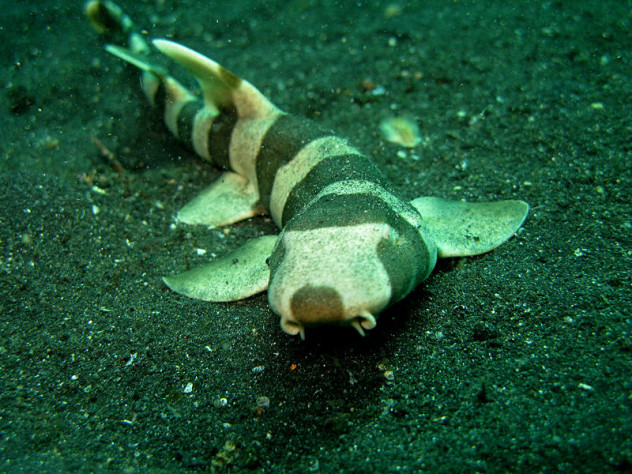
The brown-banded bamboo shark has recently established itself as the animal kingdom’s most amazing hoarder of sperm. A female shark gave birth to a healthy pup in 2012, despite not being within range of a male shark for the prior four years.
Some sharks love to tease biologists by ejecting unfertilized eggs, so even though the female was laying a carpet of potential shark pups, it was quite expected and disregarded. Upon closer inspection, two of the presumably inert eggs were actually harboring little baby sharks.
The only male in the tank was a Javanese cow-nosed ray. As might be obvious by the name, Javanese cow-nosed rays are not brown-banded bamboo sharks, so either the researchers had witnessed a miracle, or some extremely sneaky male brown-banded bamboo shark was to blame. In this case, the actual science is crazier than the speculation. The female did come into contact with a male and was impregnated in the usual way. The weird part is the 45 months between fertilization and birth.
At first, researchers thought the baby could be a clone of the mother. Some animals, including lizards and a few sharks, can skip sex and go right to birth. However, DNA testing proved that the pup was born of two different sharks. Scientists previously knew that sharks could store sperm, but that they could for such a long time was a surprise.
9Cone Snail Uses Insulin As A Weapon
The geographic cone snail might look like a runt, but it dispatches its foes in a most diabolical fashion. The snail attacks fish with an incapacitating squirt of modified fish insulin, which quickly sends victims into a hypoglycemic stupor.
However, insulin is only one component in the cone snail’s potent toxin. The chemical cocktail is loaded with nerve agents and hatred and has taken a number of human lives. There’s no known antidote other than time travel.
Most disconcertingly (if you’re a fish), the toxic cloud is an area of effect spell, capable of turning a school of small fish into a floating buffet. The instantaneous blast of insulin causes the prey’s blood sugar to nosedive and leaves them immobilized.
The insulin itself is an evolutionary marvel. It’s a modified, stripped-down version that can act quickly and induce a severe hypoglycemic crash. If all that wasn’t horrible enough, the snail possesses a secondary weapon: a spiked, snout-like appendage for use in hand-to-hand combat. The stinger can also directly deposit a dose of venom into whatever unlucky creature finds itself on the end of it.
8 Wasps Use Facial Recognition

Running into an acquaintance whose name you’ve misplaced is an embarrassing event we’ve all experienced, but not for Liostenogaster flavolineata, the tropical hover wasp. The wasp’s facial recognition system allows it to identify hive intruders before forcibly removing them from the premises.
Identifying friend from foe is largely important for social insects, whose large communities are integral to their survival—and ours as well, since communal insects like bees pollinate many of the plants we eventually eat. So, how do bugs detect unwanted guests when all their friends and enemies look the same? Some bugs prove their fraternity with pungent pheromones while others might use specific noises, like a secret knock for humans. But L. flavolineata raises the stakes by adding facial recognition to its list of abilities.
Wasp scientists aren’t sure why they’ve developed this extra skill. It might be because Southeast Asia is riddled with wasp nests; in some places neighboring nests are barely an antenna’s distance apart. With so many potential intruders, the wasps developed an upgraded security system that paired facial recognition with their already sensitive senses of smell, all to ensure the continued welfare of the mighty, exalted queen.
7 Pigeons Categorize Objects

We’ve been severely underestimating pigeon intelligence for many, many years it seems. Past research has hinted at the birds’ competency, but a recent experiment shows that pigeons can identify and group a large variety of objects, both man-made and natural. Furthermore, the mental strategies behind pigeon learning may mirror those in young human children.
The small study involved three pigeons and a touchscreen. Images from one of 16 broad categories, including childhood favorites like flowers, dogs, shoes, and hats, would flash on screen. They were accompanied by two symbols, prompting the pigeons to choose whether the items belong to certain groups (e.g., is a Chihuahua a dog?). The birds performed admirably, succeeding in matching the terms 65 to 80 percent of the time. The overachieving “Bird 45W” scored 127 out of 128, which is probably better than a number of human adults.
The study on pigeon semantics wasn’t solely carried out to test the animal’s absolute intelligence, but to observe any shared learning processes between us and the birds. Co-author Ed Wasserman, psychologist by trade, suggests that a similar style of visual trial and error is used by young children as they relate words to their physical representations.
6 Luna Moths Use Wing Tails As Bat Jammers
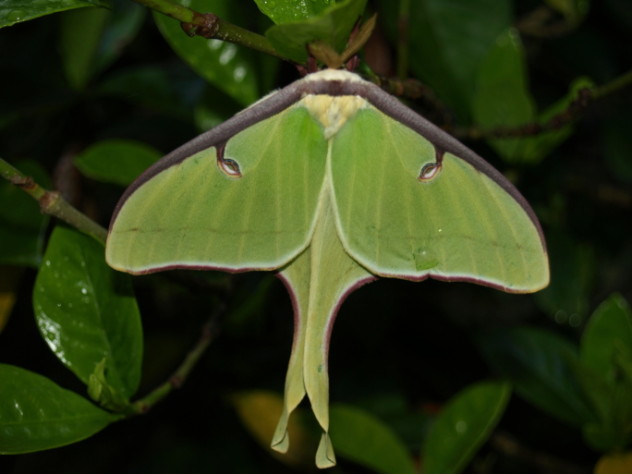
Fancied for its vivid wing coloration, the pretty luna moth appears woefully unequipped to repel the legions of bats that prey upon it, but the unassuming moth has a hidden trick up its sleeve—tiny tassels at the end of its wings. Previously considered fancifully useless, studies have confirmed the appendages are defensive adaptations used to deflect bats’ sonar.
To test the theory, scientists collected a bunch of luna moths and separated them into two groups. In one group the moths were left intact, while the others had their wing tips clipped. As a control, a small group of relatively defenseless snout moths were recruited as well. The moths were released en masse for a group of bats to devour, and the ensuing carnage was recorded. For science.
The exaggerated frills work by offering the bats a tempting, waving target. As the hungry bat strikes, it’s far more likely to get a mouthful of tail, missing the juicy, vital bits of luna moth as it snaps at a meatless rear end.
While removing the luna moths’ wing foils did nothing to spoil their aerodynamics, the intact specimens were more far successful in evading attacks. Sixty-five percent of the unclipped luna moths survived, while only 19 percent of their tailless counterparts avoided being turned into guano. The hopeless snout moths, on the other hand, were almost completely eradicated.
5 Whales Hear With Their Skulls
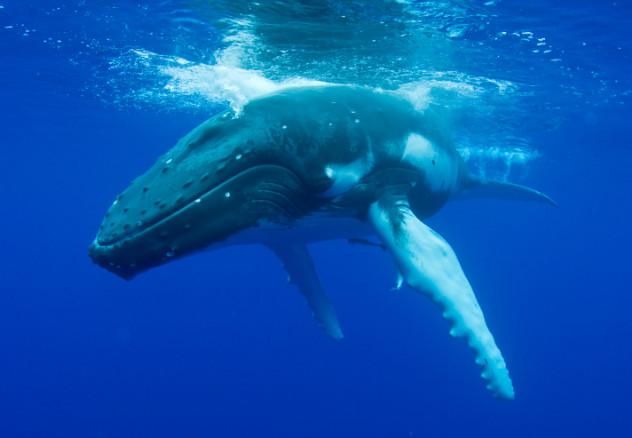
Using only a military-grade CAT scanner and a fat baby sperm whale head, biologist Ted W. Cranford and engineer Petr Krysl discovered how baleen whales hear extremely low-frequency sounds: with their faces. More specifically, their skulls capture vibrations and guide them to their ear holes.
Whales are among the most vocal members of the food chain and emit bass murmurs that can travel great distances across oceans. While scientists still don’t know what whales are saying, at least they’ve discovered a mechanism behind the cetaceans’ preternatural hearing abilities.
Sounds are vibrations that travel through mediums such as air or locked doors and impart pressure or displacement. Just like the tangible waves at the beach, the invisible properties of sound waves dictate their interactions with living things, like ears. Low-frequency waves have their troughs (or hills) far apart. In the case of whale calls, these can be stretched out to lengths of over 75 meters (245 ft). Theoretically, these sounds should fall outside the whales’ audible range.
But the whales are indeed able to receive these aquatic telegrams because they use their skulls as natural amplifiers. Vibrations resonate within their heads and are intensified past the threshold of perception. The team was able to model this phenomenon through a computer simulation and found that without this unique cephalic anatomy, whale-speak as we know it would be impossible.
4 Bats Eavesdrop
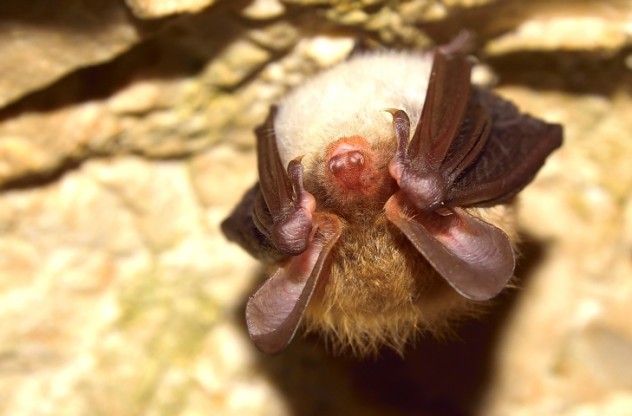
Despite portrayals in horror movies and the associated blood-sucking propaganda, bats are actually kind of cute. You probably know that loads of bats use their shrieky calls to navigate the world by echolocation, but the ability is quite limited in range. The greater mouse-tailed bats, for example, have an effective range of about 10 meters (30 ft).
Bats are crafty, though, and a new study has found that they’re quite aware of their limitations. They’ll often hunt in groups, piggybacking each other’s sonar to extend their range by up to 160 meters (525 ft). It’s kind of the equivalent to a network of Wi-Fi hotspots. The bats are effectively eavesdropping, listening out for other bats that have caught a meal and using them as guides for locating delicious insects.
However, the bats are unable to extend their range infinitely. The size of the hunting party is limited by the risk of mid-air bat collisions due to their close swarming proximity. The discovery also answers an old question, as scientists previously noted that the bats tend to hunt within 150 meters (490 ft) or so of their cave-mates.
3 Chimps Learn New Dialects

A new study involving a group of European chimps has knocked us off our linguistic pedestal; the apes revealed that certain aspects of language are not as uniquely human as we thought. Apparently, our simian friends not only yak it up in different, regional languages, but can also adopt new ones through social interaction. Biologists argue whether this might be a change in dialect rather than language, but it’s amazing nonetheless.
It all began with a shrewdness of Dutch-raised chimps that were relocated cross-continent from the Netherlands to a Scottish zoo in 2010. To the delight of the researchers, the expats quickly made friends with locals. After a while, the primatologists were surprised to find that the Dutch chimps had ditched their old calls and emulated those of their Scottish brethren as they asked for their favorite treat, apples.
More importantly, the talkative chimps blur the distinction between human and animal communication. If we’re only now finding that apes can learn synonyms, who knows how many other animal linguistic nuances exist outside our knowledge and species. And not only among simians, but other animals as well, especially perennial smarties like dolphins, elephants, octopuses, and crows.
We humans think we’re awesome because we’ve labeled most of the world. In the past, many saw chimps as simpletons, communicating solely through fits of frenzied shouting and defecation. However, we’re learning every day that non-human communication is a lot more sophisticated than we assumed.
2 Foxes Hunt With Magnetism

Don’t let the glossy coats and puffy tails fool you; foxes are natural assassins. Superhero abilities include night vision, supreme agility, and an acute sense of hearing. Over the past several years, studies have proven that red foxes are part-Magneto as well.
The foxes can strike accurately at hidden prey, even when said prey is located snugly beneath layers of snow. Using its ridiculous vulpine intuition, the red fox can plunge headfirst into snowbanks or thickets to extract small animals that didn’t even know they were being hunted. This is called mousing, and scientists were very curious about the fox’s ability to pinpoint invisible targets.
It wasn’t clear if they were able to perform this amazing feat based on audible cues alone, so Czech fox-fanatic Jaroslav Cerveny tracked 84 individual foxes and recorded their mousing attempts, almost 600 in total.
Unexpectedly, he found that foxes were most successful when leaping in a northeasterly direction, connecting on 73 percent of their strikes. Leaping in the opposite direction yielded a lower rate of 60 percent. Mousing jumps in any other direction, however, were almost futile at a relatively dismal 18 percent. It appears that the fox can make use of an internal compass.
1 Crocodiles Play

It turns out crocodiles are just misunderstood. New research from the University of Tennessee shows that the fierce modern-day dinosaur is, in reality, a fun-loving doofus. It might seem hard to imagine, but psychology professor Vladimir Dinets has the proof. He recorded crocodiles engaging in the three activities that form the scientific play continuum: locomotor play, play with objects, and social play.
Surprisingly, they’ve also been known to form long-lasting bonds with human beings and other animals. Dinets offered an anecdote about a lifelong friendship formed between a gunshot-injured crocodile and its human savior. The two became interspecies BFFs and romped about in streams and riverbeds for two decades until the crocodile died of old age.
Crocodiles love to have fun. All kinds of fun. They engage in every form of play that’s described by behavior specialists. Young crocodiles have even been observed playing with otters. Crocodilian capers range from whimsical to silly and include surfing waves, sliding down muddy hills, and giving significant others piggyback rides.


